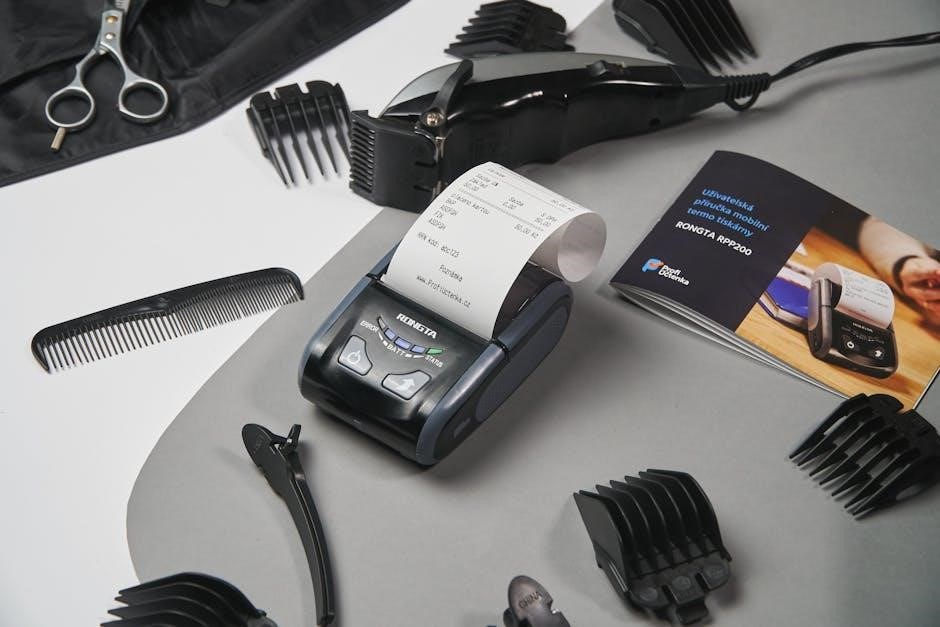
Electric and manual breast pumps are popular choices for expressing milk, offering unique benefits. Electric pumps are motorized, often double, and efficient for frequent use, while manual pumps are portable, cost-effective, and ideal for occasional use. Both cater to different lifestyles, budgets, and preferences, helping mothers maintain their breastfeeding journey seamlessly.

Types of Breast Pumps
Breast pumps are primarily categorized into electric and manual types. Electric pumps are motorized, offering efficiency and speed, while manual pumps are handheld, simple, and portable.
Electric Breast Pumps
Electric breast pumps are motorized devices designed for efficient milk expression. They come in single or double options, with some being wearable or hospital-grade. Double electric pumps allow simultaneous pumping from both breasts, saving time. Adjustable suction settings and massage modes enhance comfort and milk flow. These pumps are ideal for frequent use, offering faster results compared to manual pumps. However, they are generally more expensive and less portable. Despite this, their convenience and efficiency make them a popular choice for mothers who need to pump regularly or build a freezer stash. They often come with accessories for hands-free use.
Manual Breast Pumps
Manual breast pumps are compact, handheld devices operated by squeezing a lever to create suction. They are highly portable, affordable, and ideal for occasional use. These pumps offer more control over suction rhythm and are perfect for expressing small amounts of milk. Manual pumps are lightweight, easy to clean, and require no batteries or electricity, making them great for on-the-go use. They are a cost-effective option for mothers who do not need to pump frequently. While they may take longer to express milk, manual pumps are a practical choice for supplemental use or as a backup to electric pumps.

Key Differences Between Electric and Manual Breast Pumps
Electric pumps are faster, more efficient, and suited for frequent use, while manual pumps are portable, cost-effective, and ideal for occasional, low-volume expression needs.
Suction Power and Efficiency
Suction power and efficiency are key differences between electric and manual breast pumps. Electric pumps generally offer stronger, more consistent suction, making them faster and more efficient for expressing milk, especially for high-volume needs. Many electric models feature adjustable settings that mimic a baby’s sucking rhythm, enhancing milk letdown. Manual pumps, while effective, require manual effort and may not match the suction strength of electric pumps, making them less efficient for frequent or large-volume pumping. This difference significantly impacts the overall pumping experience and milk expression outcomes for mothers.
Frequency of Use
The frequency of use is a critical factor when choosing between electric and manual breast pumps. Electric pumps are ideal for mothers who need to pump regularly, such as those exclusively pumping or expressing milk multiple times a day. They are faster and require less effort, making them suitable for high-frequency use. Manual pumps, on the other hand, are better suited for occasional or infrequent use, as they require manual operation and can be time-consuming for frequent sessions. Electric pumps also often feature double pumping capabilities, further enhancing efficiency for regular use.
Portability and Convenience
Portability and convenience vary significantly between electric and manual breast pumps; Manual pumps are lightweight, compact, and require no power source, making them highly portable for on-the-go use. They are ideal for occasional pumping or when space is limited. Electric pumps, while often bulkier, may offer rechargeable batteries or compact designs for better portability. However, they typically require charging, which can be a drawback. Electric pumps often provide hands-free pumping with accessories like bras, enhancing convenience for multitasking. Manual pumps, though portable, require manual effort and are less convenient for frequent or extended use.
Cost Considerations
Cost is a significant factor when choosing between electric and manual breast pumps. Manual pumps are generally more affordable, with prices starting as low as $15, making them a budget-friendly option. Electric pumps, while more efficient, are considerably more expensive, ranging from $100 to $500 or more for advanced models. However, many insurance plans cover electric breast pumps, which can reduce out-of-pocket costs. Manual pumps are a cost-effective choice for occasional use, while electric pumps are often a worthwhile investment for frequent or long-term pumping needs, despite their higher upfront cost.

Pros and Cons of Electric Breast Pumps
Electric breast pumps offer faster and more efficient milk expression, customizable settings, and hands-free options for multitasking. However, they are generally more expensive and less portable.
Advantages of Electric Breast Pumps
Electric breast pumps are highly efficient, offering faster milk expression and customizable settings for suction strength and rhythm. They are ideal for frequent or high-volume pumping, saving time and effort. Many models are double electric, allowing simultaneous pumping from both breasts, which can halve the time spent. Additionally, electric pumps often come with hands-free options, enabling multitasking. They are particularly beneficial for mothers who pump regularly, need to build a freezer stash, or have busy schedules. Their advanced features also make them suitable for expressing milk in comfort and convenience.
Disadvantages of Electric Breast Pumps
Electric breast pumps are generally more expensive than manual pumps, with prices ranging from $100 to $500 or more for advanced models. They are also bulkier and less portable, making them less convenient for on-the-go use. Additionally, electric pumps often require a power source or batteries, which can be a limitation in certain situations. Some users find them noisy, and they may require more maintenance, such as cleaning multiple parts. Furthermore, electric pumps are typically single-user devices, which can be a drawback for sharing or sanitary reasons. These factors make them less ideal for casual or occasional use.

Pros and Cons of Manual Breast Pumps
Manual breast pumps are affordable, portable, and offer precise control. They are ideal for occasional use, providing a cost-effective solution for mothers with flexible needs.
Advantages of Manual Breast Pumps
Manual breast pumps are cost-effective, portable, and easy to use without batteries or electricity. They provide precise control over suction and rhythm, allowing for a more natural pumping experience. Lightweight and compact, they are ideal for occasional use or as a backup option. Manual pumps are also quieter and require no charging, making them discreet for on-the-go use. Their affordability and simplicity make them a practical choice for mothers who pump infrequently or prefer a low-tech, easy-to-clean solution. They are perfect for supplementing breastfeeding without the need for advanced features.
Disadvantages of Manual Breast Pumps
Manual breast pumps require physical effort and can be time-consuming, especially for frequent use. They may not express as much milk as electric pumps, making them less efficient for high-volume needs. Prolonged use can lead to hand fatigue, and they are not suitable for double pumping, which doubles the time required. Additionally, manual pumps lack advanced features like adjustable suction settings and massage modes, which electric pumps offer. While they are convenient for occasional use, they may not meet the demands of mothers who need to pump regularly or express large quantities of milk efficiently.
Choosing the Right Breast Pump for Your Lifestyle
Consider your lifestyle, including pumping frequency, budget, and portability needs, to select the most suitable option for your daily routine and preferences when expressing milk.
Frequency of Pumping
Frequency of pumping is a key factor in choosing between electric and manual breast pumps. For mothers who need to pump regularly, such as those exclusively expressing milk or with multiples, electric breast pumps are more efficient and time-saving. They often feature adjustable settings and can express milk faster, making them ideal for high-frequency use. On the other hand, manual breast pumps are better suited for occasional or infrequent pumping, as they require manual effort and may take longer. Assessing your daily pumping needs helps determine which type aligns best with your lifestyle and schedule.
Budget and Insurance Coverage
Budget plays a significant role in choosing between electric and manual breast pumps. Electric breast pumps are generally more expensive, with prices ranging from $100 to $500 or more, depending on features. Manual breast pumps are more affordable, often costing around $15 or less. Many health insurance plans cover breast pumps, so it’s important to check your coverage before making a purchase. Some plans may cover rental options for hospital-grade pumps. Budget considerations should also include long-term use and any additional accessories needed. Balancing cost and functionality ensures you find a pump that fits both your needs and financial situation.
Portability Needs
Portability is a key factor when choosing between electric and manual breast pumps. Manual breast pumps are lightweight, compact, and easy to carry, making them ideal for on-the-go use. They require no batteries or electricity, offering greater convenience for travel. Electric breast pumps, while often bulkier, may come with rechargeable batteries or portable designs, such as wearable options, allowing for hands-free pumping. However, they may require additional accessories for mobility. Consider your lifestyle and how often you’ll need to pump away from home to determine which type best suits your portability needs.
Additional Considerations
Additional considerations include ensuring the correct flange size for proper fit and milk expression efficiency. Regular hygiene and maintenance are crucial for both electric and manual pumps to prevent contamination and ensure longevity.
Correct Flange Size and Fit
The correct flange size and fit are crucial for effective milk expression and comfort. A poorly fitting flange can lead to discomfort, reduced milk flow, and even nipple trauma. Proper fit ensures a good seal, which is essential for efficient pumping. Flanges come in various sizes, and it’s important to choose one that fits comfortably without causing pressure or pain. Many pumps offer interchangeable flanges, allowing for customization. Consulting a sizing guide or a lactation specialist can help determine the right fit. Proper fit enhances pumping efficiency and overall comfort, making the breastfeeding journey smoother and more sustainable.
Hygiene and Maintenance
Proper hygiene and maintenance are essential for the longevity and effectiveness of breast pumps. Regularly wash and sanitize all parts, especially those that come into contact with milk, to prevent bacterial growth. Electric pumps require careful cleaning of motors and tubing, while manual pumps need thorough washing of their components. Drying parts completely after cleaning is crucial to avoid mold. Replace worn-out or damaged parts promptly to maintain performance. Following the manufacturer’s guidelines ensures optimal hygiene and functionality, safeguarding both the pump and the user’s health. Regular maintenance also prevents contamination and extends the pump’s lifespan.
Choosing between electric and manual breast pumps depends on individual preferences, lifestyle, and needs. Electric pumps offer efficiency and speed, ideal for frequent use, while manual pumps provide portability and affordability, perfect for occasional use. Both options support breastfeeding journeys by enabling milk expression. Consider factors like budget, pumping frequency, and convenience to make an informed decision. Proper hygiene and maintenance are crucial for both types to ensure safety and longevity. Ultimately, the right pump empowers mothers to nourish their babies effectively, aligning with their unique circumstances and goals.